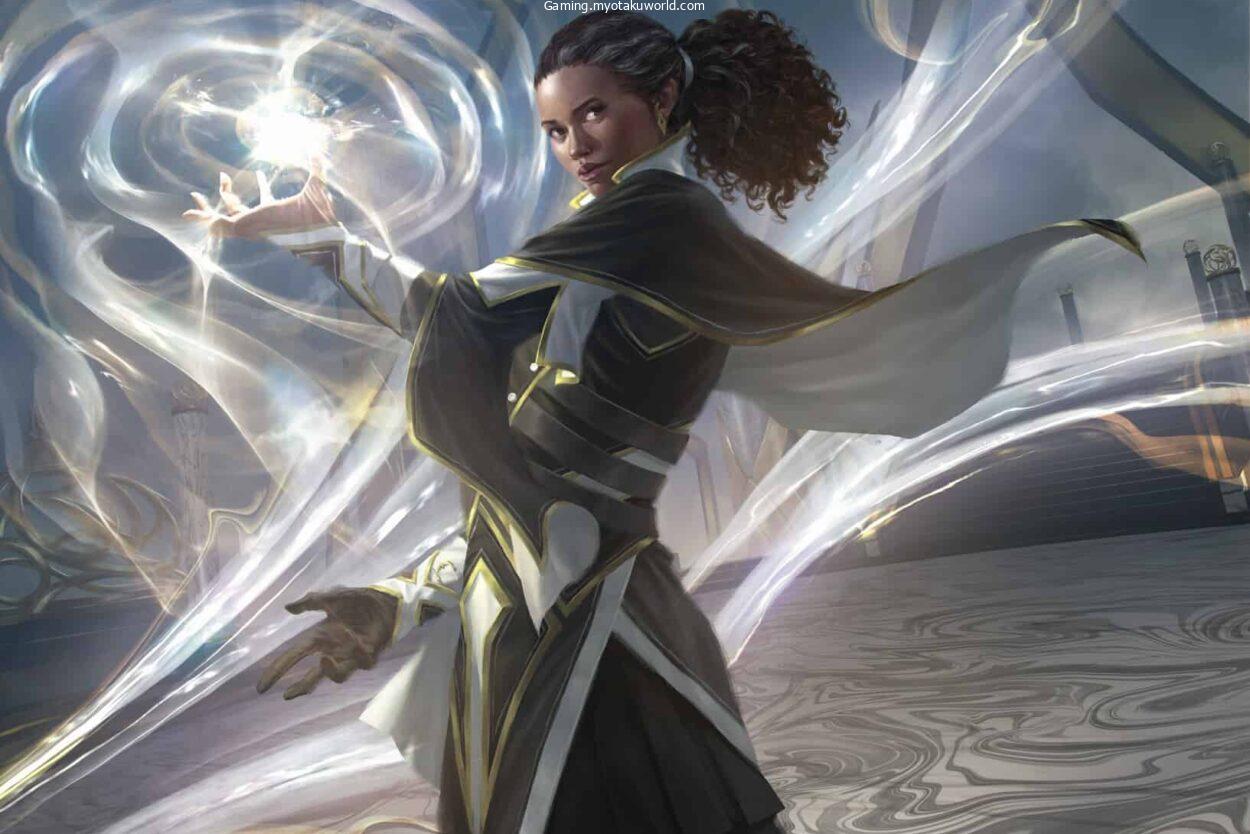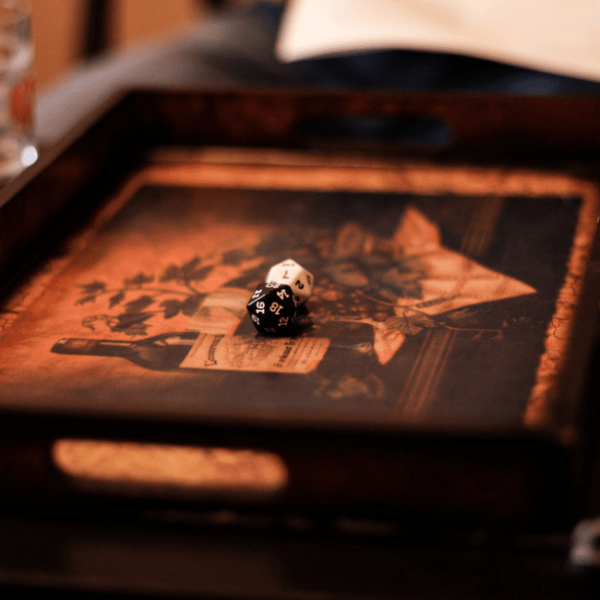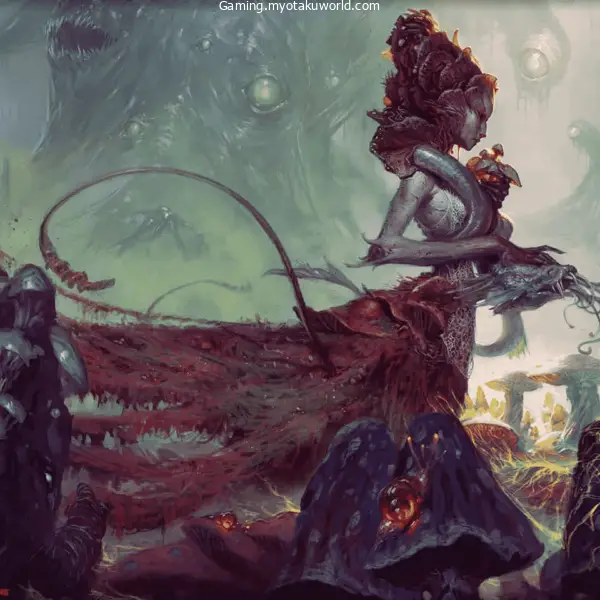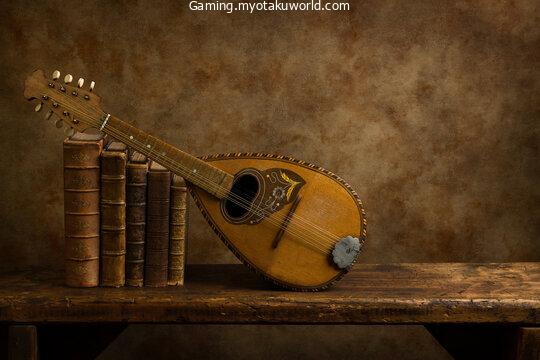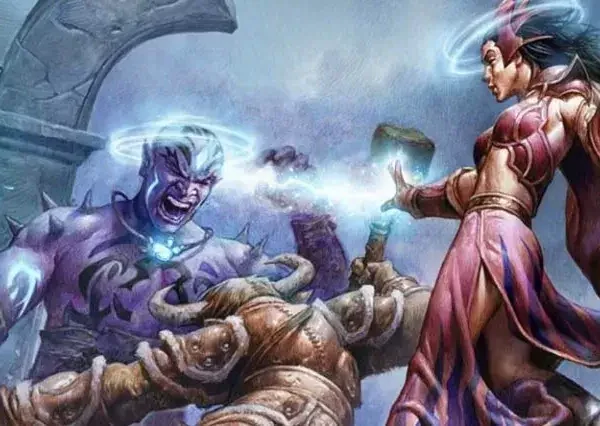The Dungeons and Dragons ‘innate’ spellcasters, and Sorcerers make a great class for both D&Dplayers and veteran gamers. Sorcerers, rare magic users in D&D are a popular class.
This guide will cover all you need to know about being a Sorcerer at 5e.
- What is the role of Sorcerers in 5e
- How to make a Sorcerer
- Sorcerous Origins
- Sorcerer spells
- Questions frequently asked
What is the role of Sorcerers in 5e?
The Sorcerer emerges out of the shadows glowing with light. She is the first Sorcerer to be born in her family’s hundreds of year-old line.
Her rare combination of natural magic and chaotic chaos makes her unique. No matter if her power comes from her draconic ancestors or the wild magic that created the world, everyone who meets her knows that it is terrifying and ancient.
Since the 3rd edition, sorcerers were a playable class within D&D. They didn’t study magic or need spellbooks. Magic is part of their personality.
They are rare and can play many roles within a party, from being a dangerous opponent in combat to providing essential buffs for other members.
Also, Sorcerers are one of the easiest spellcasting classes in D&D5e. Sorcerers, despite being simpler to play than Warlocks and Wizards, are a rewarding and exciting character class.
How to make a Sorcerer?

Sorcerer statistics
Charisma is the primary statistic for the Sorcerer in 5e.
Charisma is the best stat to have if you want to be a Sorcerer.
The constitution should follow.
Sorcerer characteristics
How many hitpoints do Sorcerers receive?
At the first level, Sorcerers receive 6 hit points and their Constitution modifier. After the 1st level, Sorcerers receive an additional d6 per level of hit points.
What armor are Sorcerers allowed to wear?
While sorcerers may wear any type of armor, they don’t have any armor proficiencies.
What weapons are available for Sorcerers?
Sorcerers are skilled with darts and slings, quarterstaffs, and light crossesbows.
In which saving throws can Sorcerers be proficient?
Constitution and Charisma. When your Dungeon Master asks for you to make a saving throw you will normally do it with either Charisma or Constitution.
What skills does a Sorcerer have?
You can select two skills when you create a Sorcerer Character in 5e: Insight, Deception, and Insight.
What equipment should Sorcerers use?
All characters in D&D 5e come with their own starting equipment. Sorcerers begin with a light crossbow, 20 bolts OR any simple weapon; component pouch OR an archefocus; a dungeoneer’s pack OR an explorer’s pack; and two knives.
What are the special abilities of Sorcerers?
We’ll go into more detail below. Spellcasting is the primary ability of Sorcerers. As they gain more experience, however, Sorcerers can also use their magic to create new abilities. These abilities include:
1st Level: Sorcerers can do four cantrips.
2nd Level: Font Of Magic: Sorcerers of 2nd and higher levels have sorcery points which can be used to gain extra spell slots or, starting at 3rd, cast metamagic.
3rd level: Metamagic: Sorcerers have the ability to use sorcery to modify spells according to their needs starting at the 3rd level. The following metamagic abilities are available to Sorcerers at the 3rd level. They can choose one of them at the 10th or 17th level.
Be careful when casting a spell that requires a saving throw: To choose a number equal to your Charisma modifier, you must spend 1 sorcery point. These creatures automatically succeed in their saving throw.
Distant spell: Spend 1 Sorcery Point to Double the Range of a Spell that has a range greater than 5ft.
Empowered spell: If you cast a spell that causes damage, you can spend 1 sorcery point to re-roll damage dice equal in value to your Charisma modifier.
Extended spell: If you cast a spell lasting at least 1 minute, you can use 1 sorcery point to increase the spell’s duration.
A spell that increases the saving throw is: You can spend 3 sorcery points to give one target of the spell disadvantage.
You can spend 2 sorcery points to change the casting of a 1-action spell to a bonus.
Subtle spell You can cast a spell by spending 1 sorcery point.
Twinned spell: By spending sorcery points equal to the spell level, you can make a spell that targets one creature and targets two. Cantrips cost one sorcery point.
4th Level: Ability Score Improvement – At 4th-8th, 12th-16th, and 19th levels, Sorcerers have the option to increase either one or both of their ability scores by 2.
20th Level: Sorcerers at the 20th Level regain 4 sorcery points after a brief rest.
Sorcerous Origins
Many origins are claimed by sorcerers who possess innate magic.
The Dungeons & Dragons Player’s Handbook offers two options for your Sorcerous Origin-
Draconic bloodline and Wild Magic.
Draconic Bloodline

Draconic Bloodline Sorcerers are descendants of those whose blood was infused with draconic magic.
Some Sorcerers claim that they are descendants of a powerful ancestor who made an agreement with a dragon to use his magic.
Others may claim they even have dragon ancestors. Others are also sorcerers, possibly because they made a pact with a dragon.
The Draconic Bloodline grants Sorcerers many special abilities. These abilities are broken down by levels:
- 1st level: Dragon Ancestor – Select a type from the following (damage type enclosed in brackets) to be your ancestor:
- Black (acid).
- Blue (lightning)
- Brass (fire)
- Bronze (lightning)
- Copper (acid)
- Fire (gold)
- Green (poison)
- Red (fire)
- Silver (cold).
- White (cold).
- You can read, write, or speak Draconic at 1st level. If you make a Charisma check while interacting with a Dragon, your proficiency bonus will be doubled.
- 1st Level: Draconic Resilience: Your dragon ancestor’s physical qualities make you stronger. Your hit points maximum increase at each level, even if you are level 1. Your AC increases by 13 when you’re not wearing armor.
- 6th level: Elemental Affinity: If you cast a spell that does the same amount of damage as the one that killed your dragon ancestor’s dragon, your Charisma modifier is added to the damage. To gain immunity to this type of damage, you can spend one hour on sorcery points.
- 14th level: Dragon Wings: You can grow dragon wings on your back and fly (your walking speed is equal to your flying speed). If you’re wearing armor, wings cannot be sprouted unless it is specifically made for them.
- 18th level: Draconic Presence: You can channel the presence and fear of your dragon ancestor to make others around you awestruck and scared. You can do this by spending 5 sorcery points as action and exuding either fear or awe to everyone within 60ft. Hostile creatures that fail Wisdom saving throws will be either charmed (awe), or scared (fear) until their aura ends. Draconic Presence lasts 1 minute, or until your concentration stops.
Wild Magic

Wild Magic is the sorcerer’s origin. It has innate magic that comes from chaos and the wild forces that created the world.
Wild Magic was discovered by some of these sorcerers while they were on another plane or in a distant realm.
Some were granted this magic by a fey or demon. A small number of sorcerers also received Wild Magic.
Wild Magic Sorcerers have a variety of special abilities. These abilities are listed by level:
- 1st Level: Wild Magic Surge: After casting a sorcerer’s spell of 1st or higher, the Dungeon Masters can ask you for a roll of a d20. A random magic effect occurs if you roll a 1. This can be determined by rolling a 1 on a d100 and comparing the number to the Wild Magic Surge Table. The Player’s Handbook has more information.
- 1st Level: Tides of Chaos: Wild Magic Sorcerers may gain an advantage by rolling one attack roll in between long rests. After using Tides of Chaos, the Dungeon Master will ask you to roll on Wild Magic Surge Table. You immediately regain your Tides of Chaos ability.
- 6th level: Bend luck: If a creature that you can see makes an attack roll or an ability check, you can use your reaction and spend 2 sorcery points to change fate. You roll 1d4 to add the bonus or penalty you choose to the creature’s roll.
- 14th Level: Controlled Chaos: You can roll twice on the Wild Magic Surge Table and choose between the numbers.
- 18th level: Spell Bombardment: Once per turn, if your spell damage roll is successful and you have rolled the highest number of dice possible, you can reroll the dice and add the damage to your total.
Alternative Sorcerous Origins

You can find many other Sorcerous Origins than the two listed in the Player’s Handbook. You can also find other Origins:
- Tasha’s Cauldron of Everything :
- Aberrant mind: You have been granted psionic powers by an alien influence, which allows you to alter the world and touch the minds of others.
- Clockwork soul: You have been infused with an order by a plane of existence that is rooted in clockwork efficiency such as Mechanus.
- Xanathar’s Guide to Everything :
- Divine Soul: You have been instilled with magic by a divine being, which allows you to use spells that are usually associated with the Cleric class.
- Shadow: Your magic comes from Shadowfell. This is the dark plane of Shadow. This allows you to cast many dark and strange spells.
- Storm: You can draw your power from elemental water, which gives you control over weather and storms.
What spells does the Sorcerer use in 5e?
Arcane Magic is instilled in Sorcerers. Because they are ‘innate’ spellcasters, sorcerers don’t need spellbooks nor need to prepare spells like Wizards.
Instead, Sorcerers only know a limited number of spells at each level. They can regain their spell slots after a long rest.
Sorcerers at the 1st Level have four Sorcerer Cantrips and two Sorcerer spells. You will gain more spells as you level up.
What are the Sorcerer Cantrips?
Cantrips are a type of special spell that can be cast anytime, anywhere. Cantrips can be cast at a level of 0. You have the option to choose from these cantrips at 1st level:
- Acid Splash: A bubble of acid is thrown at one or more creatures that are within range. The target takes 1d6 acid damage if they fail a Dexterity saving throw.
- Blade Ward: Tracing a sigil in the air ahead of you will protect you from any piercing or bludgeoning damage done by weapons up to the end of your next round.
- Chill Touch: You create a ghostly, skeletal hand in front of a creature less than 120 feet. The target suffers 1d8 necrotic injury from a successful ranged attack and cannot recover health until your next turn. The target is at a disadvantage when you use it against undead creatures until your next turn.
- Dancing Lights: You can create up to four torch-sized glowing lights. These lights can appear in the form of beams or orbs or combined to create a humanoid-shaped light.
- Fire Bolt: As a ranged attack you can throw motes of fire at a target. If the attack succeeds, the target will take 1d10 fire damage.
- Friends: You have a 1-minute advantage on all Charisma checks directed towards a non-hostile creature. The spell will end when the creature realizes you have used magic on them and becomes hostile and possibly violent.
- Light: An object that you touch emits bright lights within a radius of 20 feet
- Mage hand: This creates a floating hand that appears within 30ft. This can be used for manipulating objects, such as lifting small objects or opening doors.
- Repair: A single tear or break can be repaired (maximum 1ft) on any object you touch.
- Message: A creature within 120ft can hear your message and respond back.
- Minor illusion: Create a sound or an image within 30 feet for one minute. You can’t make an image larger than 5ft. If an intelligent check against your spell save DC (difficulty) is successful, a creature can see that the object is an illusion.
- Poison spray: A puff of poisonous gas can be used to target a nearby creature. The creature must pass a Constitution test. If they fail, they will take 1d12 poison damage.
- Prestidigitation: Within 10ft, you can create the following magical effects:
- It is a harmless sensory effect that can include odor, music, wind, or sparks.
- A candle, torch, or small campfire can be lit or extinguished.
- An object can be cleaned or soiled up to 1 cubic foot.
- For 1 hour, you can make a color or symbol appear on an object.
- Rays of Frost: Create a beam with cold, blue light to hit any creature within range of your successful ranged attack. The target will suffer 1d8 cold injury.
- Shocking Grasse: You can shock a creature using a melee attack. If the target is wearing armor made of metal, your attack roll will be more favorable. If the target is hit, it takes 1d8 lightning injury and can’t react until the beginning of its next turn.
- True Strike: By pointing at a target located within 30ft of you, you can gain insight into their defenses. You have an advantage when you attack that target on your next turn.
What are the best 5e Sorcerer spells for 1st-level Sorcerers?

Although they have access to many great spells at the 1st level, sorcerers can only know two.
You can choose between two spells at 1st-level depending on your role within the party. Are you a combat-oriented sorcerer, or more interested in illusion magic? These are the top 1st-level spells you should consider.
- Charm person: You may charm any humanoid within your range if they make a Wisdom saving throw. Charmed creatures will view you as a friend, but will recognize that they have been charmed.
- Mage Armor – If you touch a willing creature that isn’t wearing armor, their AC will increase to 13 and their Dexterity modifier. If the creature puts on armor or you disallow the spell, the spell ends.
- Magic Missile You can create three magical darts, which can each be fired at any creature within 120ft. Each dart deals 1d4+1 force damage.
- Roll 5d8 – This will give you the total hit points of all creatures that you can use to put them into a magical sleep with this spell. This spell is not effective against the undead and other creatures that are immune to charm.
FAQs
Can multiple Metamagic options be used on one spell?
You can’t usually use multiple Metamagic options in one spell. However, there is an exception to this rule. An empowered spell can only be used on a spell that has received a Metamagic option at the time of its casting.
In 5e, what is the Sorcerer’s ability to cast spells?
Charisma: Your Charisma modifier is used whenever a spell refers to your spellcasting ability. Your Charisma modifier can also be used to determine your spell save DC or spell attack modifier.
What are the main focus points for spellcasting by Sorcerers?
Sorcerers use an Arcane Focus as a spellcasting focal for Sorcerer spells. This item is usually an orb, rod or crystal that can channel the power of arcane magic. An arcane focus is required for any arcane spell with a Material (M), component.
Which are the best cantrips for Sorcerers?
Light, Mage Hand, and Message are all very useful cantrips to keep on hand. These can make life easier for everyone. Chill Touch can also be used to make combat easier.
Final Words
In D&D5e, sorcerers can be a fun and rewarding class. Although their spellcasting is simple, it can be extremely powerful.
You might consider playing as a Sorcerer by purchasing Arcane Spellbook Card. You can check the effectiveness of your spells without needing to read rulebooks.
